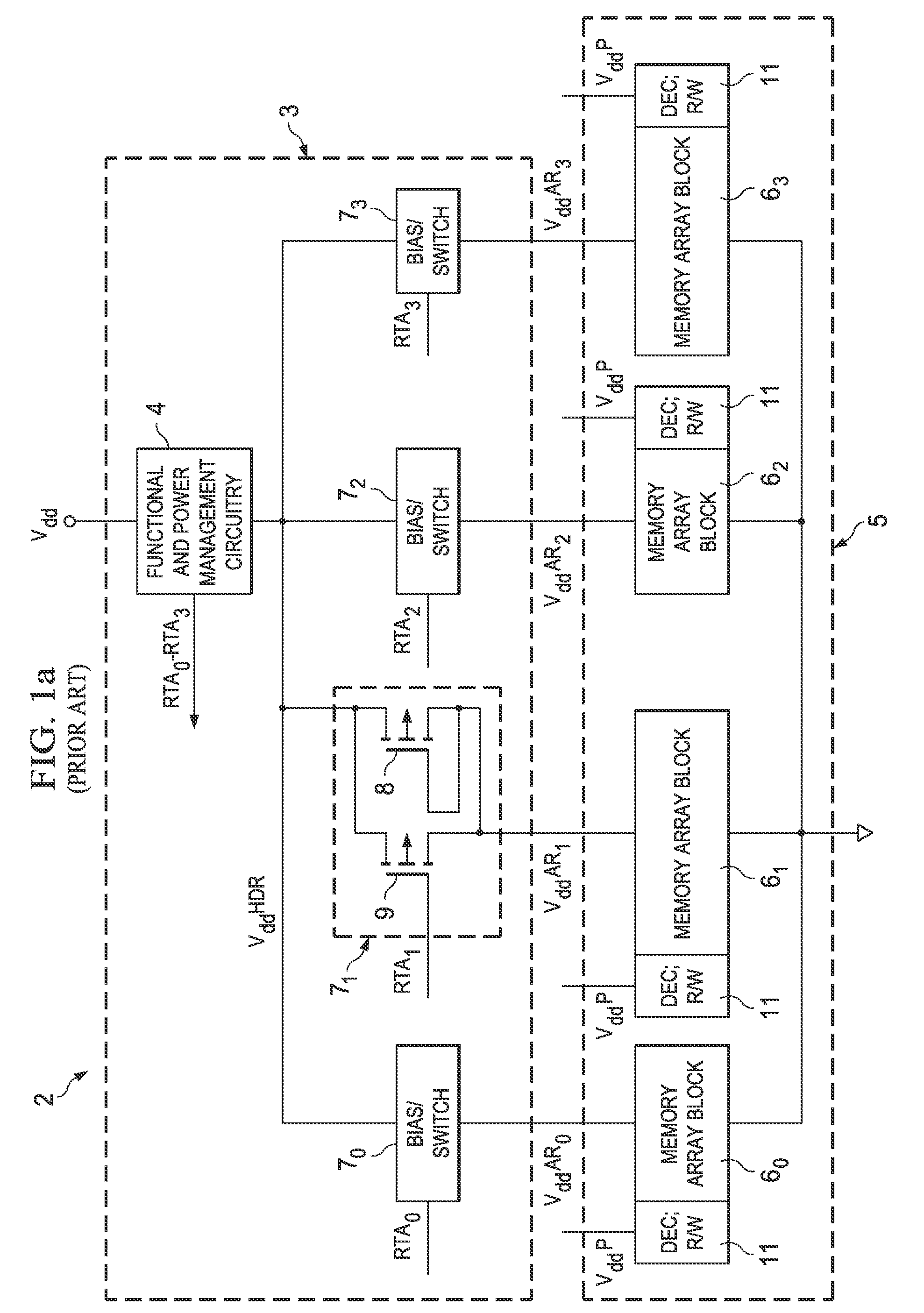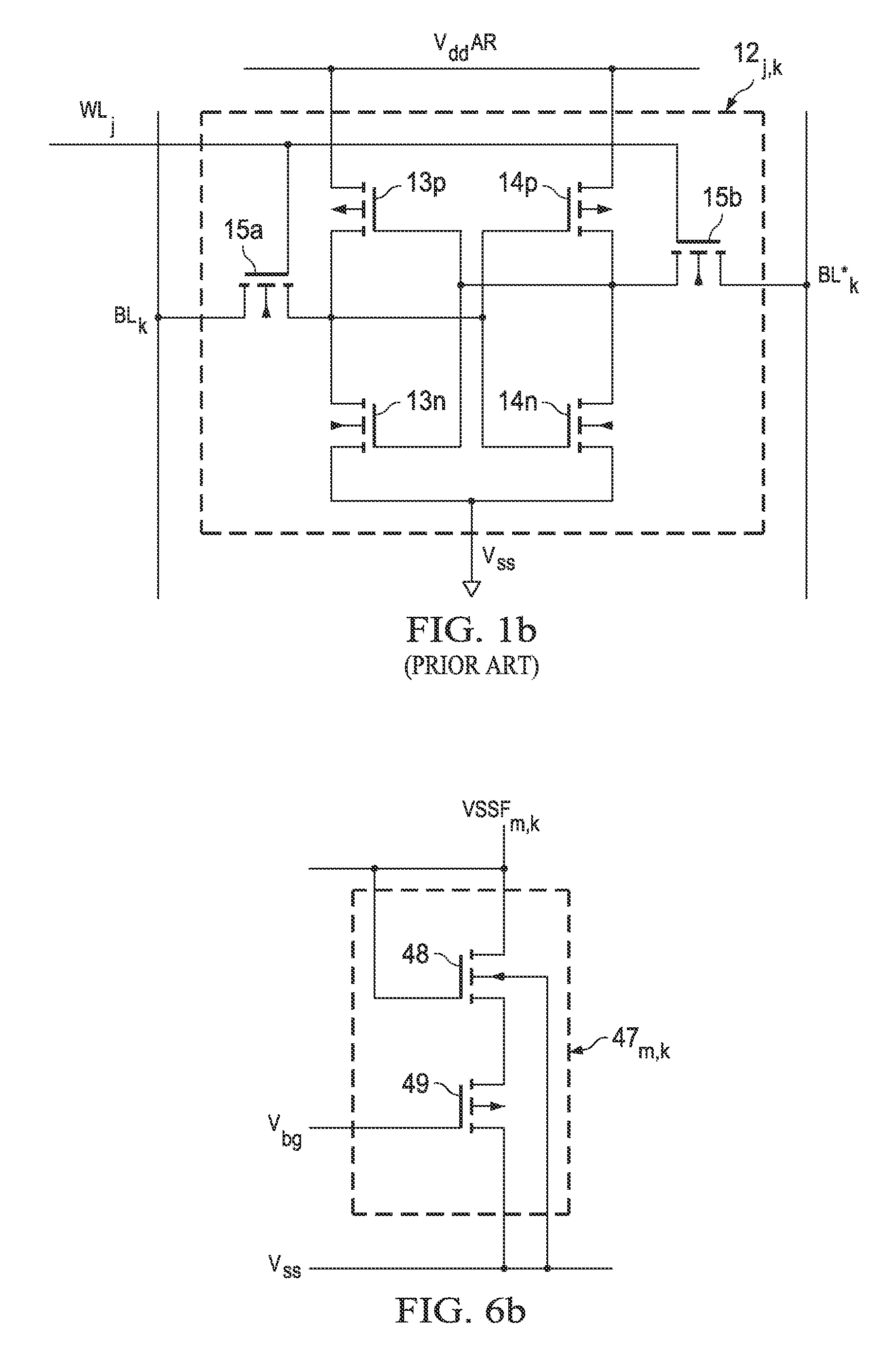Retain-till-accessed power saving mode in high-performance static memories
a static memory and power saving technology, applied in static storage, information storage, digital storage, etc., can solve the problems of significant overall standby power consumption, significant recovery time, and high power consumption of electronic circuitry in those devices and systems, and achieve the effect of reducing the power supply voltag
- Summary
- Abstract
- Description
- Claims
- Application Information
AI Technical Summary
Benefits of technology
Problems solved by technology
Method used
Image
Examples
Embodiment Construction
[0034]The present invention will be described in connection with its preferred embodiment, namely as implemented into an integrated circuit including an embedded memory array, and constructed according to complementary metal-oxide-semiconductor (CMOS) technology. However, it is contemplated that the benefits of this invention may be attained when realized in other applications and constructed according to other technologies. Accordingly, it is to be understood that the following description is provided by way of example only, and is not intended to limit the true scope of this invention as claimed.
[0035]Referring now to FIG. 2, by way of example, integrated circuit 20 constructed according to embodiments of this invention will now be described at a block diagram level. As shown in FIG. 2, integrated circuit 20 includes functional circuitry 23, power management circuitry 24, and memory array 25. The functionality provided by functional circuitry 23 may vary widely depending on the de...
PUM
 Login to View More
Login to View More Abstract
Description
Claims
Application Information
 Login to View More
Login to View More - R&D
- Intellectual Property
- Life Sciences
- Materials
- Tech Scout
- Unparalleled Data Quality
- Higher Quality Content
- 60% Fewer Hallucinations
Browse by: Latest US Patents, China's latest patents, Technical Efficacy Thesaurus, Application Domain, Technology Topic, Popular Technical Reports.
© 2025 PatSnap. All rights reserved.Legal|Privacy policy|Modern Slavery Act Transparency Statement|Sitemap|About US| Contact US: help@patsnap.com



